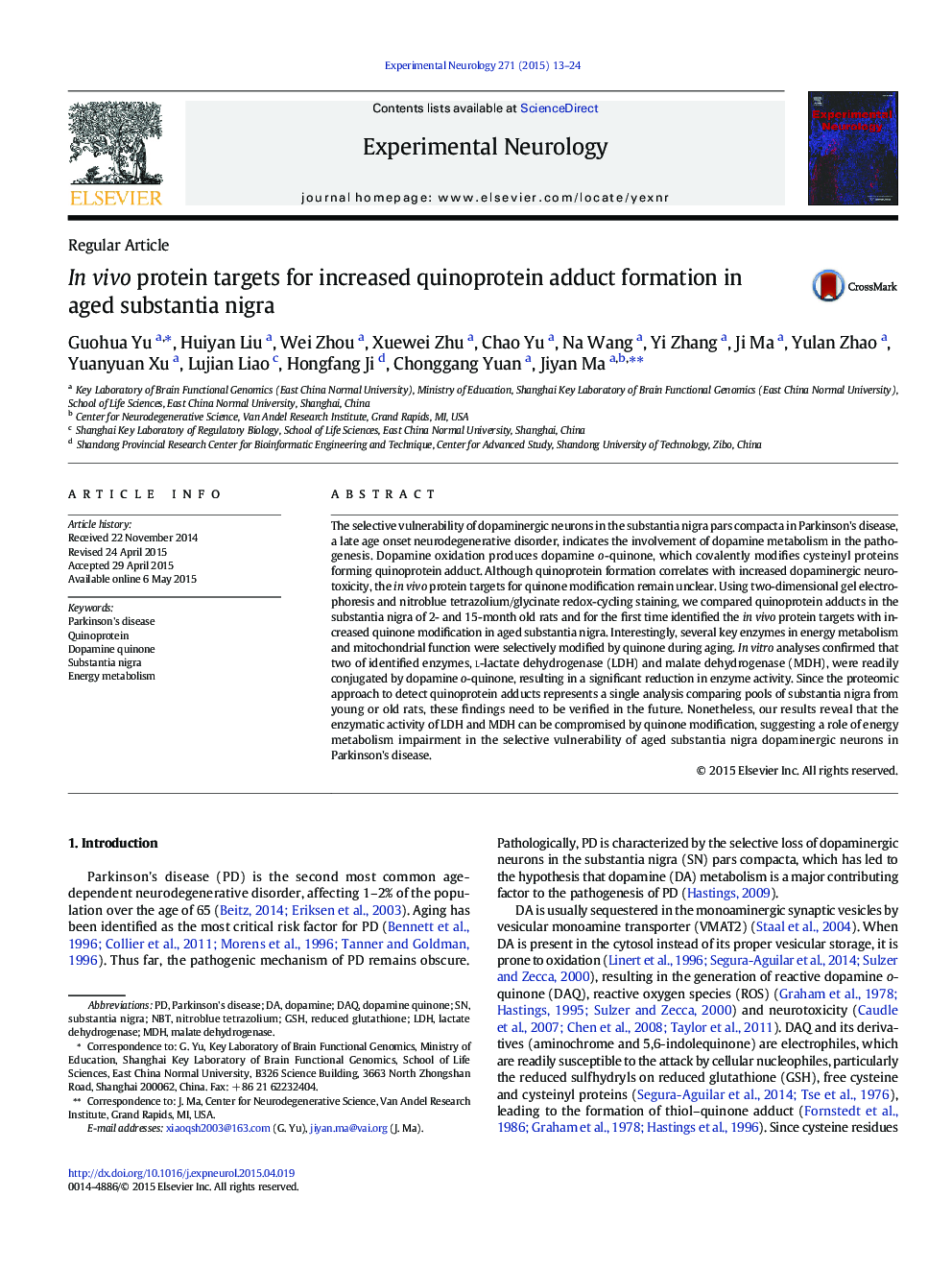| کد مقاله | کد نشریه | سال انتشار | مقاله انگلیسی | نسخه تمام متن |
|---|---|---|---|---|
| 6017202 | 1580162 | 2015 | 12 صفحه PDF | دانلود رایگان |

- Quinoprotein adducts in the substantia nigra of 2- and 15-month rats were compared.
- In vivo proteins with increased quinone modification in aged substantia nigra were identified.
- Four of the five identified proteins were key enzymes involved in energy metabolism.
- Two of identified enzymes were readily modified by dopamine quinone in vitro.
- Dopamine quinone modification significantly reduced enzyme activity.
The selective vulnerability of dopaminergic neurons in the substantia nigra pars compacta in Parkinson's disease, a late age onset neurodegenerative disorder, indicates the involvement of dopamine metabolism in the pathogenesis. Dopamine oxidation produces dopamine o-quinone, which covalently modifies cysteinyl proteins forming quinoprotein adduct. Although quinoprotein formation correlates with increased dopaminergic neurotoxicity, the in vivo protein targets for quinone modification remain unclear. Using two-dimensional gel electrophoresis and nitroblue tetrazolium/glycinate redox-cycling staining, we compared quinoprotein adducts in the substantia nigra of 2- and 15-month old rats and for the first time identified the in vivo protein targets with increased quinone modification in aged substantia nigra. Interestingly, several key enzymes in energy metabolism and mitochondrial function were selectively modified by quinone during aging. In vitro analyses confirmed that two of identified enzymes, l-lactate dehydrogenase (LDH) and malate dehydrogenase (MDH), were readily conjugated by dopamine o-quinone, resulting in a significant reduction in enzyme activity. Since the proteomic approach to detect quinoprotein adducts represents a single analysis comparing pools of substantia nigra from young or old rats, these findings need to be verified in the future. Nonetheless, our results reveal that the enzymatic activity of LDH and MDH can be compromised by quinone modification, suggesting a role of energy metabolism impairment in the selective vulnerability of aged substantia nigra dopaminergic neurons in Parkinson's disease.
Journal: Experimental Neurology - Volume 271, September 2015, Pages 13-24